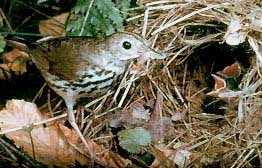 Five states submitted a plan for conserving lesser prairie chickens to the US Fish and Wildlife Service last week. It is the third draft for the plan, Lone Star Outdoor News reports. The five states are Colorado, New Mexico, Texas, Kansas and Oklahoma. The multi-state conservation plan is a bid to keep the bird of the federal endangered species list.
Five states submitted a plan for conserving lesser prairie chickens to the US Fish and Wildlife Service last week. It is the third draft for the plan, Lone Star Outdoor News reports. The five states are Colorado, New Mexico, Texas, Kansas and Oklahoma. The multi-state conservation plan is a bid to keep the bird of the federal endangered species list.
The planning process began a year ago, in April 2012. The USFWS will make its final ruling on September 30, 2013.
Read the press release from the Kansas Department of Parks, Tourism and Wildlife here.
Read the same press release from the Texas Parks and Wildlife Department here.
Lone Star Outdoor News adds a headline that mentions the third draft, here.
Photo: © Gerard Bertrand, courtesy Texas Parks and Wildlife Department

 Last year the US Fish and Wildlife Service quietly handed over the responsibility for issuing incidental take permits for species listed under the federal Endangered Species Act to the Florida Fish and Wildlife Conservation Commission, according to
Last year the US Fish and Wildlife Service quietly handed over the responsibility for issuing incidental take permits for species listed under the federal Endangered Species Act to the Florida Fish and Wildlife Conservation Commission, according to  The recent issue of
The recent issue of 



 A designation as endangered or threatened for the Western population of the northern leopard frog was
A designation as endangered or threatened for the Western population of the northern leopard frog was 